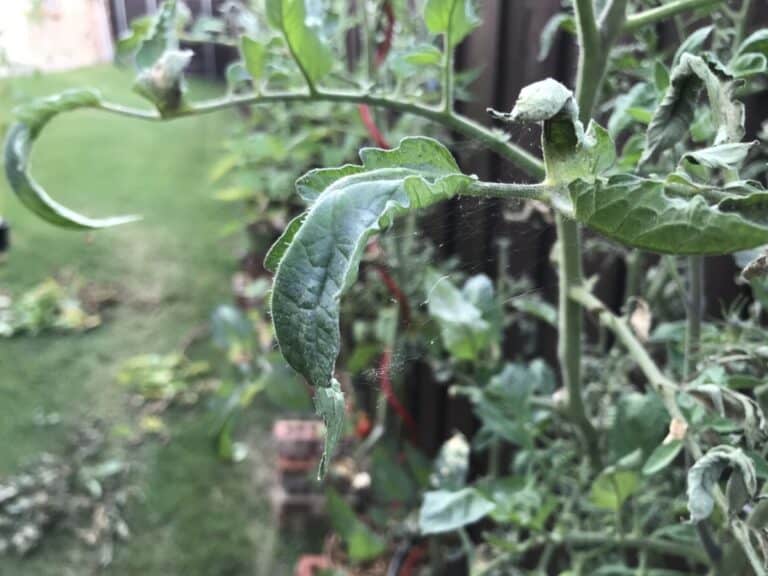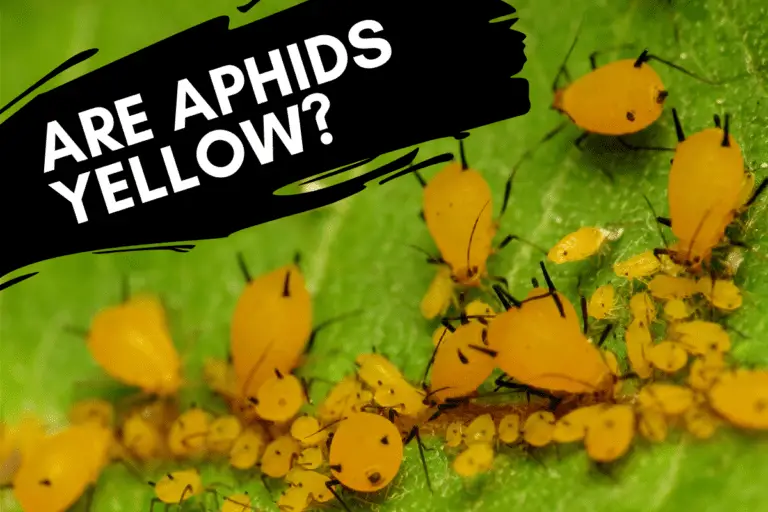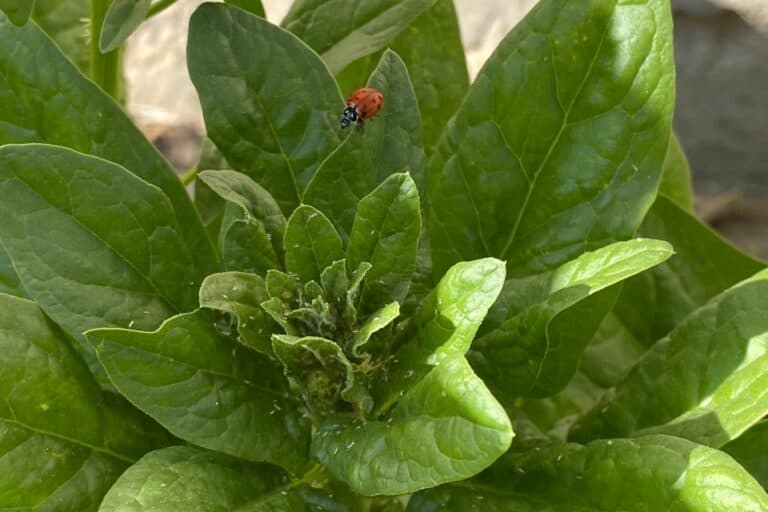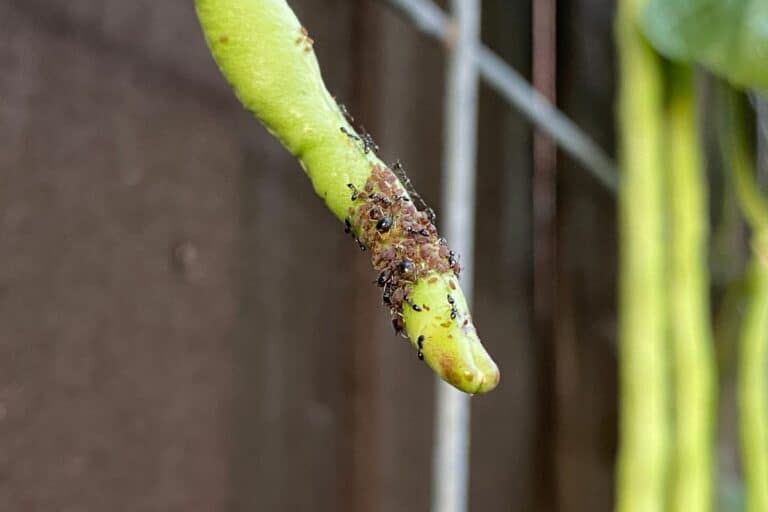Will Diatomaceous Earth Harm Bees or Butterflies?
Diatomaceous earth (DE) is a go-to pest solution if you’re interested in controlling infestations naturally and organically.
But you might be wondering: What will DE do to bees, butterflies, and other beneficial bugs? Will it harm or kill them too?
Generally speaking, diatomaceous earth can kill bees, butterflies, and any other beneficial insects that come into direct contact with it. DE is quite abrasive, and it’ll damage bees’ and butterflies’ exoskeletons, increasing the chances of their dehydration and eventual death.
DE is a helpful way to stop aphids, cucumber beetles, flea beetles, and other garden pests, but you’ll need to understand the potential impacts of DE on bees and butterflies since these bugs play a vital role in pollination.
If you apply DE thoughtfully and precisely, you’ll avoid hurting helpful garden pollinators. But misusing it could inadvertently kill these beneficial bugs and harm your garden ecosystem.
If you’d like to learn more about diatomaceous earth, please keep reading because I’ll cover these important topics below:
- the effects of DE on bees.
- the ways that DE can impact butterflies.
- other beneficial insects that might be harmed by haphazard DE applications.
- a step-by-step guide to responsibly using DE in your garden.
The goal of this article is to give you everything you need to know to apply DE properly and avoid harming bees, butterflies, and other beneficial bugs in the process.
One final thing before I get into the details. If you’d like to apply diatomaceous earth safely and effectively, I’d encourage you to get your hands on food-grade DE and a high-quality bulb duster. I use these products in my garden, and they’ve been a great help:
Now that we’ve covered the DE products you’ll need to have on hand, let’s get started!
Will Diatomaceous Earth Harm or Kill Bees?
I’ll start with bees because I get really excited whenever I see them flying around my plants.
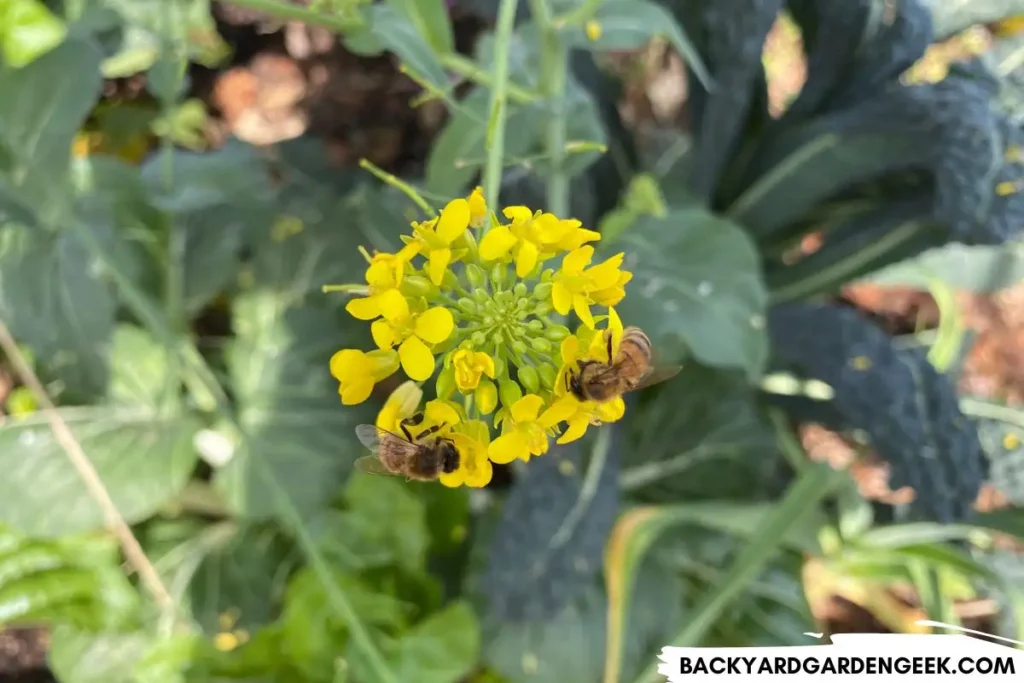
You might forget about bees when applying diatomaceous earth in your garden, and that’s understandable since DE is usually used to stop garden pests such as:
- Ants
- Aphids
- Beetles
- Flies
- Mealybugs
- Mosquitoes
- Nematodes
- Slugs (it only slows them down)
- Snails (it only slows them down)
- Spider Mites
- Stink Bugs
- Wasps
- Weevils
- Whiteflies
Since they’re beneficial, bees might not cross your mind when you’re working to control these harmful invaders. But bees can also become the unintended victims of sloppy DE applications.
Here’s what can happen:
- You might be spraying your plants with DE during the daytime hours when bees are active. If you spray a bee directly with DE, you’ll definitely harm or kill it within 24-48 hours since the DE will cut up its exoskeletons and dehydrate it.
- But diatomaceous earth can also wreak havoc on bees if they unwittingly land on flowers that are covered in it and thereby get it on themselves. They might not die within 24-48 hours, but they’ll likely suffer some damage to their exoskeletons, which is never good since DE’s sharp, abrasive particles can puncture their protective outer layer
Simply put, bees can be affected both by direct application and by landing on DE-coated plants. The former is a death sentence, but the latter is bad for them as well.
To protect bees from the negative impacts of DE, please spot-check plants before applying this natural pesticide.
If you see any flying pollinators in your garden, you might want to hold off on applying DE until the sun starts to set and your garden friends stop for the day.
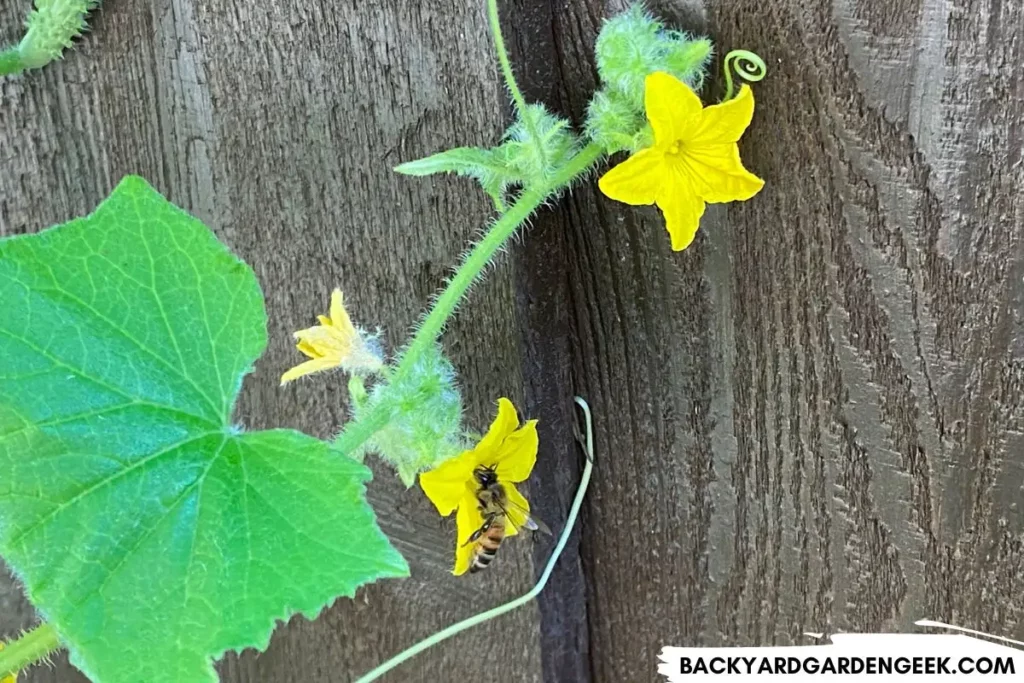
Spot-checking will help you avoid directly spraying pollinators with DE, but what about indirect contact? Can you minimize the chances that you’ll indirectly harm bees?
Fortunately, you can minimize the risk to bees by using the following methods:
| Apply DE Late in the Day | Bees are most active during the warmest parts of the day, generally between 10 AM and 5 PM. If you apply DE much later when bees are less active (preferably when the sun is setting), you’ll reduce their chances of coming into contact with it. |
| Target Your DE Applications | Instead of broadly applying DE, target its application to areas with visible pests. This method reduces the overall amount of DE in your garden, decreasing the chances that you’ll harm or kill bees with it. |
| Avoid Flowers | Are your plants flowering? You might want to avoid those since bees are likely to visit those flowers. Apply DE selectively, targeting stems and leaves in particular, not flowers. |
| Try Different Methods | DE is just one tool in your pest management arsenal. Consider using other control methods such as soapy water or neem oil sprays. Using DE sparingly helps protect bees and other beneficial insects. |
Long story short, bees play a critical role in our gardens, pollinating plants and giving us better harvests.
When using DE in your pest management routine, please keep in mind the safety of these beneficial helpers since it’d be a shame to unwittingly injure or kill them.
I mentioned soapy water and neem oil sprays above. If you don’t have much experience with those pest control methods, I highly recommend learning more about them since you can easily use them in conjunction with diatomaceous earth.
Here are a few articles I’ve written that’ll teach you more about how I use them in my garden:
- Diatomaceous Earth vs. Neem Oil: Which Should You Use?
- How Can I Make Neem Oil More Effective? My 10-Step Process
- Is Neem Oil Safe on Fruits and Vegetables? Food for Thought
- Neem Oil Plant Burn: Why It Happens + How to Avoid It
- Using Neem Oil to Kill Spider Mites: A Complete Guide
- Washing Neem Oil Off Vegetables: Do This Before Eating
- What Bugs Does Neem Oil Repel and Get Rid Of?
Will Diatomaceous Earth Harm or Kill Butterflies?
Now that I’ve covered bees, let’s take a quick look at what can happen if you spray butterflies with diatomaceous earth or if they land on plants you’ve covered in diatomaceous earth.
Unlike bees, which can sometimes be hard to see if they’re crawling around your flowering plants, butterflies are pretty obvious.
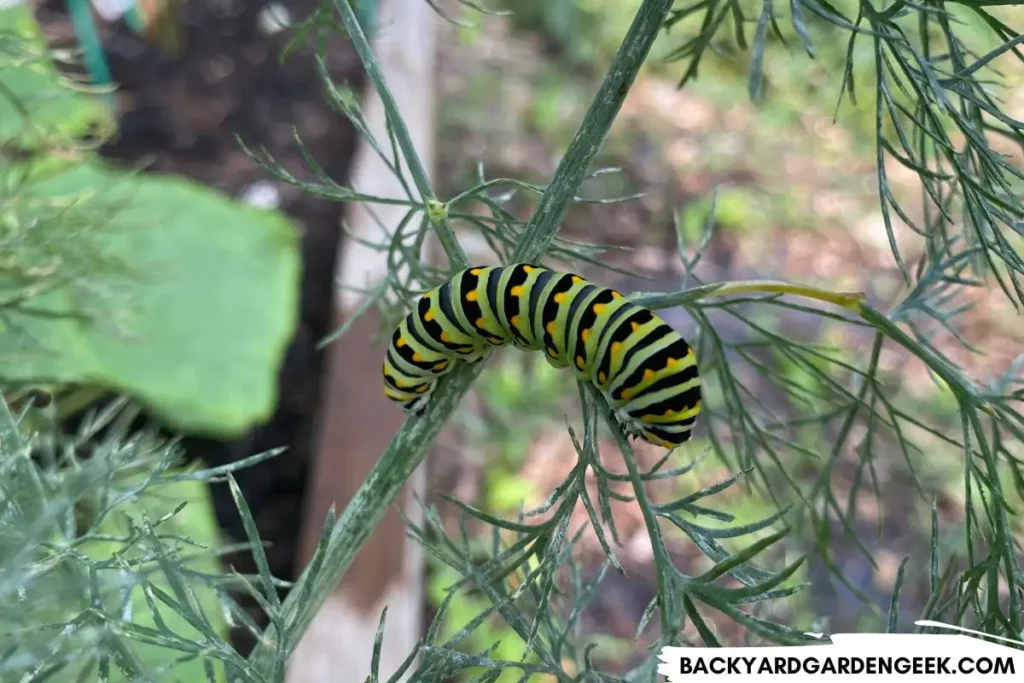
When spraying DE in your garden, you might accidentally harm or kill butterflies if you engage in broad applications since wider dispersal patterns send more DE onto plants and into the air.
If butterflies are anywhere in the vicinity of your plants, do not spray DE at all. You could unintentionally coat nearby butterflies. Even a light sprinkling of DE is enough to dehydrate and kill them.
Here’s the potential harm: If a butterfly comes into direct contact with DE, its exoskeleton will be damaged by the abrasive particles, causing dehydration and even death.
Even indirect exposure can be harmful. If butterflies land on flowers coated with DE, they can still encounter abrasive particles that’ll damage their legs or wings.
So, how can you avoid accidentally killing butterflies with DE?
| Timing | Butterflies are active during the day, so it’s best to apply DE in the early evening when the sun hasn’t yet set. You’ll have plenty of light to work with, but the butterflies will be done for the day. |
| Selective Application | Bags of Harris Diatomaceous Earth come with plastic bulb dusters—which are better than applying DE by hand—but I prefer the high-quality bulb dusters made by Dr. Killigan’s since they allow me to be more accurate with my applications. |
| Limited Usage | DE isn’t the only option for pest control. Explore other methods—such as soapy water sprays and neem oil—and use DE sparingly to reduce the risk to butterflies and other beneficial insects. |
Remember, your garden does best when you’ve got a balanced ecosystem in your yard. While DE can help control destructive pests, you’ll want to use it responsibly so as to keep beneficial pollinators safe from harm.
10 Beneficial Insects That Diatomaceous Earth Can Harm
Diatomaceous earth doesn’t distinguish between friend and foe since its abrasive particles can damage the exoskeletons of both beneficial and harmful bugs alike.
With that in mind, here’s a list of helpful bugs that will be harmed or killed by direct or indirect contact with DE:
| Ants | Certain types of ants, especially those that aren’t harmful like fire ants or leafcutter ants, help control pests and aerate soil. But they can also protect aphids, so you’ll need to keep a close eye on them. |
| Assassin Bugs | These predators contribute to controlling populations of pests like aphids and caterpillars. |
| Bees | Primary pollinators, bees can suffer damage to their exoskeletons and eventually die when exposed to DE. |
| Butterflies | These pollinators can have their delicate wings and bodies damaged by DE, impairing their ability to fly, feed, and reproduce. |
| Lacewing Bugs | Known as “aphid lions,” these insects feed on aphids and other pests. DE can harm these helpful predators. |
| Ladybugs | Natural aphid predators, ladybugs can have their exoskeletons damaged by DE. |
| Pill Bugs | Also known as roly-polies, these bugs play an essential role in decomposing organic material. They can be harmed by DE. |
| Praying Mantises | Predators of various pests, praying mantises can fall victim to DE’s abrasive qualities. |
| Spiders | Despite their scary reputation, spiders control various pests, and most are perfectly harmless. But they can be negatively impacted by DE. |
| Wasps | Some wasps, like the braconid and ichneumon wasps, keep pest populations in check. They, too, can suffer from contact with DE. |
When using DE, please apply it selectively to your plants and consider its potential impact on these helpful bugs.
They’re integral to maintaining a balanced and thriving garden, so you’ll want to be careful when and how you apply DE to your plants.
With that in mind, I’d like to share a step-by-step approach that I use to apply DE carefully and selectively.
A Step-by-Step Guide to Applying Diatomaceous Earth
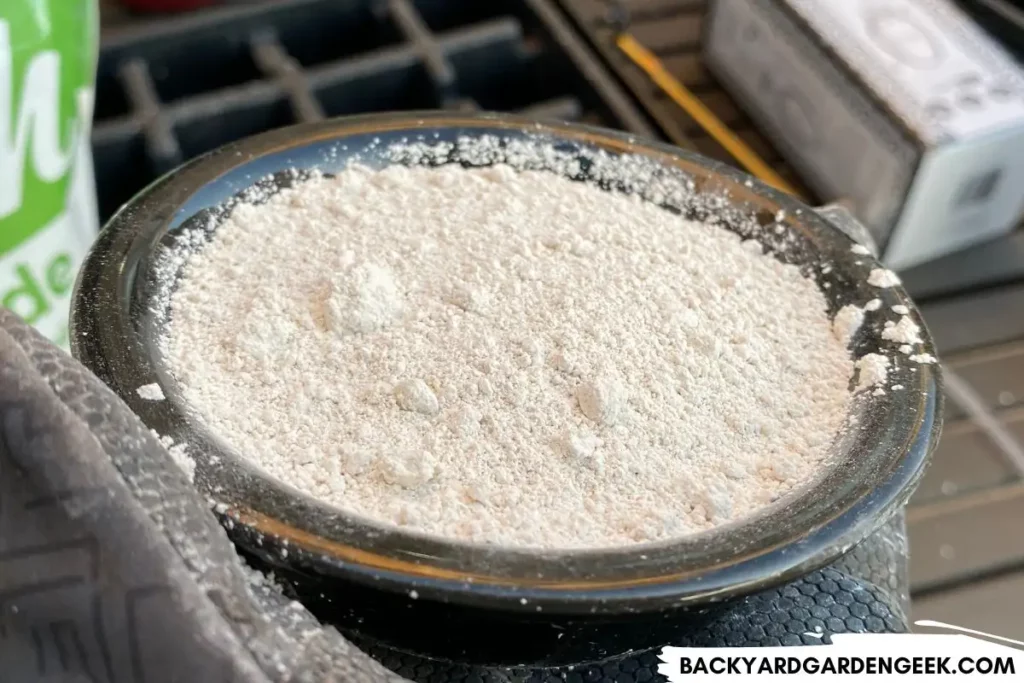
Using diatomaceous earth responsibly not only reduce the likelihood that you’ll kill off helpful garden bugs and beneficial pollinators. When used in conjunction with other pest management strategies, it’ll also ensure the health and safety of your plants.
Here’s a step-by-step guide to using DE in your garden:
1. Spot-Check Plants for Beneficial Bugs: Before you apply DE, thoroughly inspect your plants. Look for any signs of beneficial insects you don’t want to harm.
Take time with Step 1 since you’ll be amazed at how much you see when you look closely. For example, I’ve found ladybug larvae under leaves and lacewing bugs hanging around my beans and spinach.
If you apply DE, neem oil, or soapy water to your plants, you’ll likely kill these bugs.
Should you see any such bugs crawling around your plants, you should consider a more targeted application or maybe even wait to use DE until they’ve moved on.
2. Wear Protective Gear: DE can irritate your eyes and lungs during the application process, especially on windy days.
When handling or applying DE, I wear gloves to avoid getting the DE powder all over my hands. I also wear other protective gear like goggles and a mask to protect myself from any stray particles that are blown into the air.
3. Use a High-Quality Bulb Duster: A high-quality bulb duster, like those made by Dr. Killigan’s, can aid in applying DE in a targeted, efficient manner.
If you buy bags of Harris Diatomaceous Earth, you’ll likely get a free plastic bulb duster, but those plastic versions are often challenging to use and spray out too much DE at once. Better bulb dusters allow you to control the flow of DE so you’re only using exactly what you need.
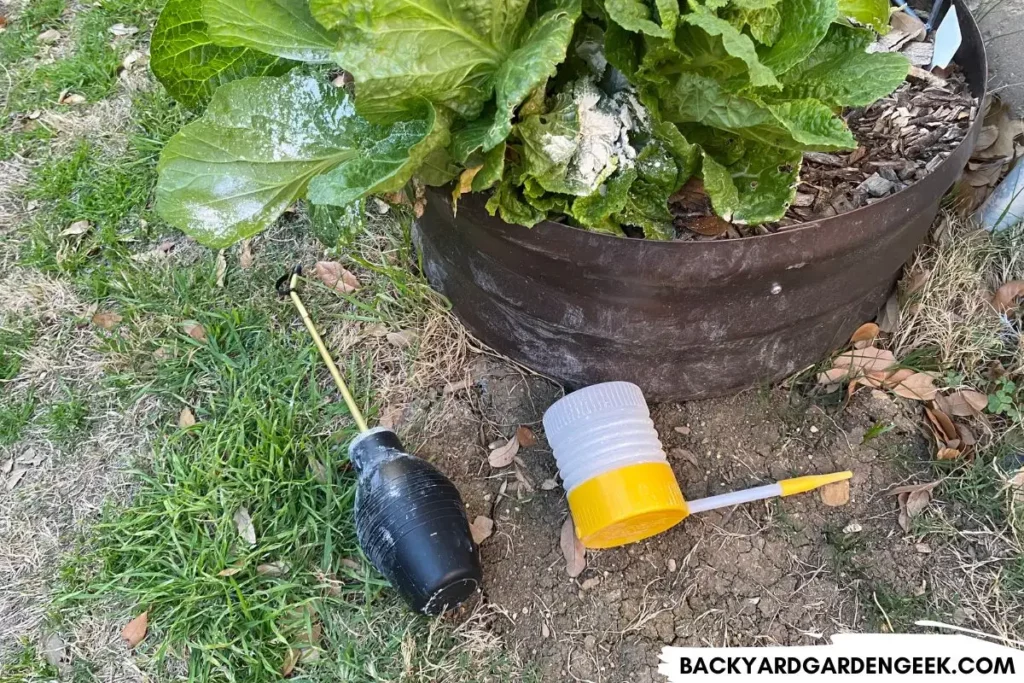
Unless you’re dealing with an extreme infestation that requires a broader application, use a good bulb duster and focus your DE dusting on problematic areas only.
4. Check the Weather: DE is most effective when it’s dry. Avoid applying it when there’s rain in the forecast because the rain will wash it away, and you’ll have to reapply it again.
If that happens, no worries. Simply reapply the DE to the infested places once they’ve had a chance to dry.
5. Apply DE at Sunset: Pollinators like bees and butterflies are less active later in the day.
Unlike neem oil, you can apply DE at any time of day, but I suggest waiting until early evening, when the sun’s setting but there’s still light outside.
You can apply DE at other times of the day, but why take the chance that you’ll harm helpful flying insects? Just wait until those bugs have finished their work for the day, then carefully apply DE to your plants.
6. Reapply As Necessary: DE doesn’t have a residual effect like harsch chemical pesticides. That means that you’ll need to reapply it somewhat regularly under normal conditions but especially so if it’s rainy, very humid, or incredibly windy outside.
Keep an eye on your plants and reapply once a week if you feel there’s an ongoing infestation you need to stamp out.
7. Integrate Other Pest Control Methods: DE is just one tool in your pest management toolkit. For optimal pest control, consider integrating it with other methods, depending on the type of infestation you’re dealing with.
Soapy water sprays or neem oil sprays are 2 of my favorite pest management methods, and they can be effective for certain pests and offer alternatives to ensure you’re not overusing DE.
Some people even use peppermint oils, orange spray, boric acid, pyrethrin sprays, and other pest management methods, but generally speaking, soapy water, neem oil, and DE are my go-to options when I see pests in my garden.
Final Thoughts
Using diatomaceous earth responsibly ensures its effectiveness while protecting beneficial insects.
The last thing I want to do is cover my garden plants in chemical pesticides, so DE allows me to target infested plants while respecting the garden ecosystem I’m trying to foster in my backyard.
As I’ve noted above, DE is a powerful tool for gardeners, but it doesn’t distinguish between friend or foe.
Every application has the potential to impact not only harmful pests but beneficial insects as well. Since these beneficial bugs play critical roles in the lives of our plants and soil—contributing to pollination, decomposition, and natural pest control—you’ll want to be particularly careful when using DE around your garden.
If you’ve enjoyed reading this article and want to learn more about DE, I recommend these related posts:
- 5 Reasons to Mix Diatomaceous Earth with Soil
- Can Diatomaceous Earth Harm Plants? What Scientists Say
- Can You Put Too Much Diatomaceous Earth on Plants?
- Using Diatomaceous Earth as a Fertilizer: Will DE Help?
- Will Diatomaceous Earth Harm or Kill Cucumber Beetles?
- Will Diatomaceous Earth Harm or Kill Earthworms?


